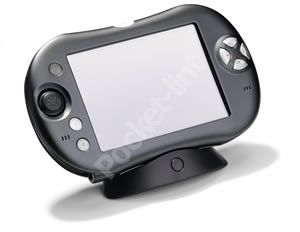When you are commuting to work in the morning, do you look around at the increasing number of PDAs that are being used on public transport? Chances are that only a small portion of them will be used for anything other than playing games.
Our quick take
First and foremost, if anyone tells you that they bought the Tapwave Zodiac as anything other than a gaming machine, they are lying both to you and themselves. We have been using the Zodiac 2 for a few weeks now and seldom, if ever used it for anything other than playing games. Sadly, I bet it gets dropped by the hardcore as soon as Sony's PSP arrives, but that gives Tapwave until next spring to sort the battery out.

Tapwave Zodiac 2 - 3.5 / 5
| FOR | AGAINST |
|---|---|
|
|
The Tapwave Zodiac 2 doesn't make any apologies for what it is - a portable games console. By hijacking the Palm operating system it has taken a long-established and extremely stable format and added greater functionality for the consumer rather than the business use.
The screen is an impressive 3.8-inch display. Rather than the conventional portrait mode, on the Zodiac it defaults in the landscape position. This means that games can be played in the same format as on your TV or PC. The host of games that are currently supported range from racing games to a full take of Command & Conquer for those with a strategy bent. If you need to switch between the two formats this is possible, at the push of a button.
To make the screen, the styling of the device feels very much like a gamepad for your console. An analogue controller can be found on the left-hand side of the device and four action buttons on the right. Hidden away in the top of the device are trigger buttons. As with many consoles, the Zodiac also makes the most of a Rumblepack, so should you crash or fall when playing, the device will vibrate.
Because of the familiar layout, using the Zodiac feels very intuitive. As you would expect, a device that has been designed with more than keeping tracks of PIM functions need a good deal of processing power to make it function. Powered by the Motorola iMX 1 processor, we found that applications loaded quickly and smoothly. Tapwave has also incorporated the ATi Imageon handheld graphics processor into the Zodiac. Used in conjunction with the Fathammer X-Forge 3D accelerator engine, the Zodiac produces excellent graphic quality.
As with typical Palm devices, there are also MP3 and video playback features on the Zodiac. Leisure pursuits to one side, the Zodiac also comes pre-loaded with the standard array of office applications, form contacts and address book through to word processing. So, should the need arise, the Zodiac 2 can also function as a personal organiser.
So far, so good, the Zodiac manages to fulfil all the criteria of a winning handheld. However, it practise things are seldom as clear as you would like. The main problem with this device is its sheer lack of battery life. The main reason for this has to be the screen, which is extremely bright. Even switching it down to a lower level didn't produce the desired effect. Therefore, it would seem that the combination of CPU, GPU and the screen are too much for the battery to handle for more than three hours at a time. If Tapwave can overcome this problem, they may well have a winning device on their hands.
To recap
Marrying PDA and gaming handheld into one package works exceedingly well. We’re just not convinced that people will use it as anything other than a games machine
